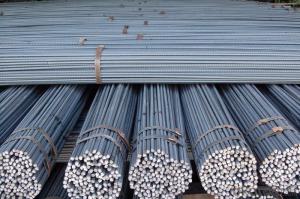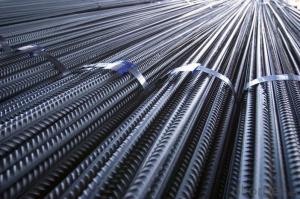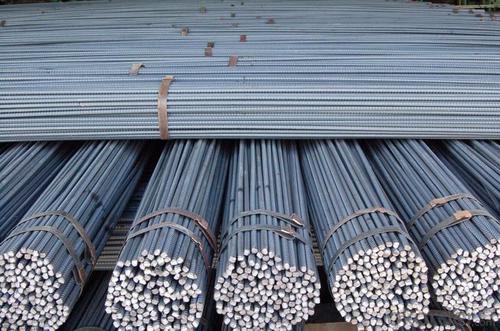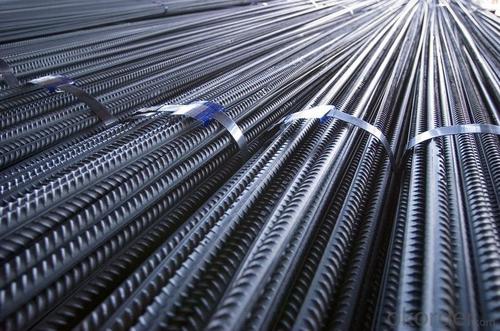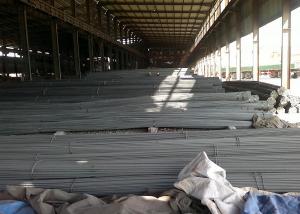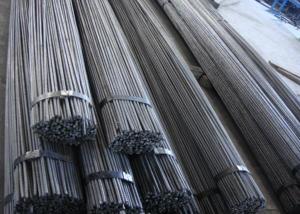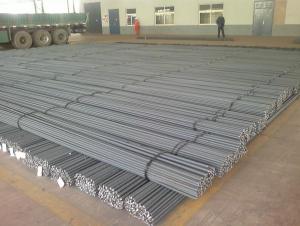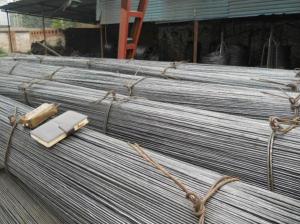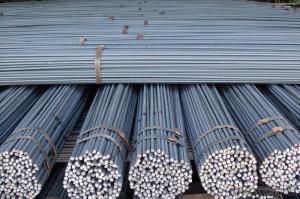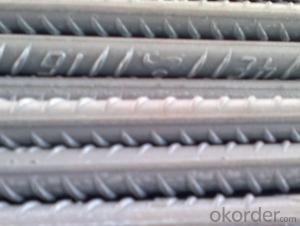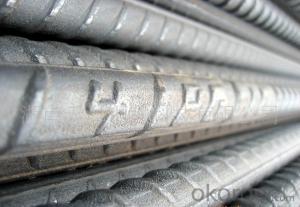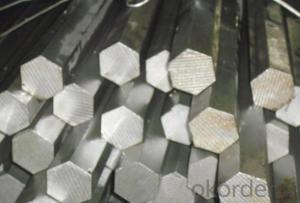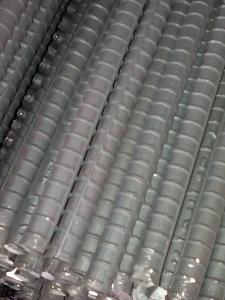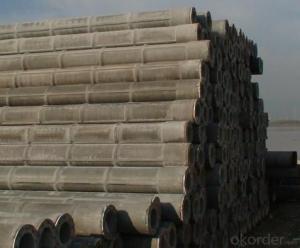Hot Rolled Deformed bars with High Quality
- Loading Port:
- Tianjin
- Payment Terms:
- TT OR LC
- Min Order Qty:
- 25 m.t.
- Supply Capability:
- 10000 m.t./month
OKorder Service Pledge
OKorder Financial Service
You Might Also Like
OKorder is offering Deformed Steel Bar with high quality at great prices with worldwide shipping. Our supplier is a world-class manufacturer of steel, with our products utilized the world over. OKorder annually supplies products to European, North American and Asian markets. We provide quotations within 24 hours of receiving an inquiry and guarantee competitive prices.
Note:
1. Our products are produced according to national standard (GB), if not, supply according to national standards (GB) or agreement as customer required.
2. Other Grade and Standard Deformed Steel Bar we can supply:
Grade: GR40/GR60, G460B/B500A/B500B/B500C,BST500S
Standard: ASTM, BS, DIN
3. We can not only supply Deformed Steel Bar; if you need anything about building materials, please contact us for further information.
4. Please send us your detail specifications when inquire. We will reply to you as soon as possible. We sincerely hope we can establish a long stable business relationship.
Product Applications:
Deformed Steel Bar with high quality are ideal for structural applications and are widely used in the construction of buildings and bridges, and the manufacturing, petrochemical, and transportation industries.
Product Advantages:
OKorder's Deformed Steel Bar with high quality are durable, strong, and resist corrosion.
Main Product Features:
· Premium quality
· Prompt delivery & seaworthy packing (30 days after receiving deposit)
· Corrosion resistance
· Can be recycled and reused
· Mill test certification
Product Specifications:
Standard | GB | HRB400 | |
Diameter | 10mm-32mm | ||
Length | 6M, 12M | ||
Place of origin | Hebei, China mainland | ||
Advantages | exact size, regular package, chemical and mechanical properties are stable. | ||
Type | Hot rolled deformed steel bar | ||
Chemical Composition:
Grade | Technical data of the original chemical composition (%) | ||||||
C | Mn | Si | S | P | V | ||
HRB400 | ≤0.25 | ≤1.60 | ≤0.80 | ≤0.045 | ≤0.045 | 0.04-0.12 | |
Physical capability | |||||||
Yield Strength (N/cm²) | Tensile Strength (N/cm²) | Elongation (%) | |||||
≥400 | ≥570 | ≥14 | |||||
Theoretical weight and section area of each diameter as below for your information:
Diameter(mm) | Section area (mm²) | Mass(kg/m) | Weight of 12m bar(kg) |
18 | 254.5 | 2.00 | 24 |
20 | 314.2 | 2.47 | 29.64 |
22 | 380.1 | 2.98 | 35.76 |
FAQ:
Q1: Why buy Materials & Equipment from OKorder.com?
A1: All products offered byOKorder.com are carefully selected from China's most reliable manufacturing enterprises. Through its ISO certifications, OKorder.com adheres to the highest standards and a commitment to supply chain safety and customer satisfaction.
Q2: How do you guarantee the quality of our products?
A2: We have established an advanced quality management system which conducts strict quality tests at every step, from raw materials to the final product. At the same time, we provide extensive follow-up service assurances as required.
Q3: How soon can we receive the product after purchasement?
A3: Within three days of placing an order, we will begin production. The specific shipping date is dependent upon international and government factors, but it is typically 7 to 10 workdays.
bdenum enhance this surface layer and improve the corrosion resistance of the stainless material.
Images:
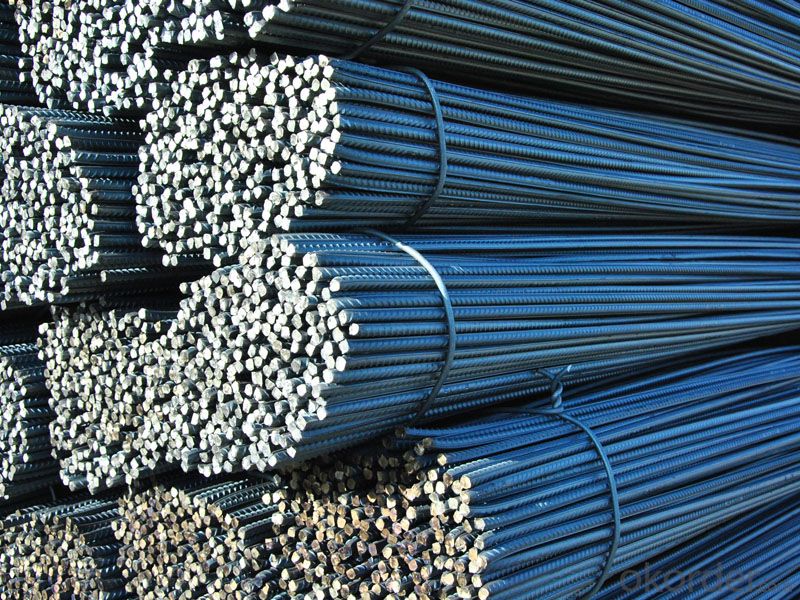
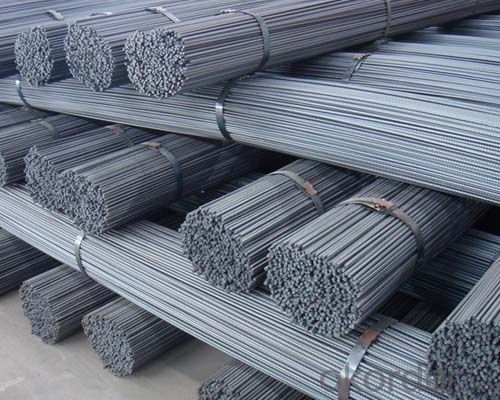
- Q: How are steel rebars different from other types of reinforcement?
- Steel rebars, also known as reinforcing bars, are different from other types of reinforcement primarily due to their composition and strength. Unlike other types of reinforcement such as fiberglass or carbon fiber, steel rebars are made of steel, which gives them exceptional strength and durability. One of the key differences between steel rebars and other types of reinforcement is their ability to withstand high tensile forces. Steel has a high tensile strength, meaning it can resist being stretched or pulled apart. This makes steel rebars ideal for reinforcing concrete structures that are subjected to significant tensile loads, such as bridges, buildings, and highways. Another distinguishing feature of steel rebars is their ability to bond well with concrete. The ridges or deformations on the surface of rebars provide better adhesion between the steel and concrete, allowing for efficient load transfer. This bond ensures that the concrete and steel work together as a composite material, enhancing the overall strength and structural integrity of the reinforced concrete structure. Steel rebars also offer versatility in terms of shape and size. They are available in various diameters, lengths, and shapes, including round, square, and deformed. This allows engineers to choose the most appropriate type of rebar based on the specific requirements of the construction project. Additionally, steel rebars are highly resistant to corrosion, especially when they are properly coated or protected. This resistance to corrosion ensures the longevity and durability of the reinforced concrete structure, even in harsh environments or exposure to moisture. In summary, steel rebars differ from other types of reinforcement due to their exceptional strength, ability to withstand high tensile forces, excellent bond with concrete, versatility in shape and size, and resistance to corrosion. These qualities make steel rebars the most commonly used and preferred choice for reinforcing concrete structures in the construction industry.
- Q: What are the common defects or issues associated with steel rebars?
- Steel rebars can encounter various defects or issues, including the following: 1. Rust: When exposed to moisture or corrosive substances, steel rebars are prone to rusting. This rust weakens their load-bearing capacity and compromises the structural integrity of the reinforced concrete. 2. Poor bonding with concrete: Inadequate cleaning or the presence of rust can prevent rebars from bonding well with the concrete. This can result in reduced strength and durability of the reinforced concrete structure. 3. Incorrect size or shape: Structural problems can arise from rebars that are improperly sized or shaped. For instance, rebars that are too short or have insufficient coverage might not provide enough reinforcement, making the structure susceptible to cracking or collapse. 4. Improper placement: Weak points in the reinforced concrete can occur due to incorrect rebar placement. This can happen when rebars are not adequately spaced, aligned, or when there are gaps between the rebar and the concrete. 5. Inappropriate storage and handling: To prevent rust, it is crucial to store rebars in a dry and well-ventilated area. Improper storage or handling can lead to surface damage, bending, or twisting of the rebars, affecting their performance in reinforced concrete. 6. Welding defects: Welded rebars may have defects such as insufficient fusion, cracks, or lack of penetration. These defects can compromise the strength and integrity of the reinforcement. 7. Overlapping issues: Overlapping rebars is a common practice to ensure reinforcement continuity. However, improper overlapping, such as insufficient overlap length or inadequate lapping of rebars, can result in weak joints and reduced structural strength. 8. Quality control concerns: Defects or issues in rebars can arise from inadequate quality control during manufacturing or installation. This can encompass problems like improper chemical composition, inadequate strength, or deviations from specified standards. Addressing and rectifying these defects or issues during the design, manufacturing, and construction stages is crucial to ensure the safe and reliable performance of reinforced concrete structures. Regular inspection, maintenance, and adherence to industry standards and guidelines are essential in mitigating these common issues associated with steel rebars.
- Q: Can steel rebars be used in railway track construction?
- Yes, steel rebars can be used in railway track construction. Steel rebars provide strength, durability, and resistance to corrosion, making them suitable for use in railway track infrastructure. They help reinforce the concrete structures used in the track bed and ensure stability and longevity of the railway tracks.
- Q: What is the ductility of steel rebars?
- The ductility of steel rebars refers to its ability to deform under tension without fracturing. Steel rebars are known for their high ductility, allowing them to withstand significant bending and stretching without breaking. This property makes them ideal for reinforcing concrete structures, where they can absorb and distribute loads effectively.
- Q: What is the impact of steel rebars on the overall sustainability of a building?
- Steel rebars have a significant impact on the overall sustainability of a building due to their various environmental, economic, and social implications. Firstly, steel rebars contribute to the durability and resilience of the structure, enhancing the longevity of the building. This means that the building will require fewer repairs and renovations over its lifespan, reducing the need for additional resources and minimizing waste. In terms of environmental impact, steel rebars can be recycled, reducing the demand for new steel production and the associated carbon emissions. Recycling steel rebars also saves energy and reduces the extraction of raw materials, such as iron ore and coal. Additionally, steel rebars can be salvaged and reused in other construction projects, further extending their lifespan and reducing waste. From an economic standpoint, the use of steel rebars can lead to cost savings in construction and maintenance. Steel is a versatile and strong material, allowing for lighter and more efficient designs, which can result in reduced material and labor costs. Moreover, the recyclability and salvagability of steel rebars can provide economic benefits through the resale or repurposing of the material. Furthermore, steel rebars play a crucial role in ensuring the safety and structural integrity of buildings, especially in areas prone to earthquakes or high winds. By providing reinforcement to concrete, steel rebars enhance the resistance of the building to external forces, reducing the risk of collapse or damage during natural disasters. This aspect of safety is essential for the wellbeing of occupants and the community at large. In conclusion, steel rebars have a positive impact on the overall sustainability of a building. They contribute to durability, reduce environmental impacts through recycling and reuse, offer economic benefits, and enhance the safety of the structure. Incorporating steel rebars in construction projects can significantly improve the long-term sustainability and resilience of buildings.
- Q: Are steel rebars easy to handle and install on-site?
- Steel rebars are generally known for their ease of handling and installation on-site. They have widespread usage in construction projects to reinforce concrete structures like buildings, bridges, and roads. The versatility of steel rebars lies in their availability in various sizes and lengths, making them convenient to work with. They can be effortlessly cut, bent, and shaped to meet the specific requirements and design of the structure. Moreover, steel rebars are lightweight in comparison to alternative reinforcement materials, making transportation and maneuverability on-site much simpler. Additionally, their excellent tensile strength ensures both structural stability and durability. However, it is crucial to note that appropriate safety measures need to be taken while handling and installing steel rebars due to their sharpness and potential risk of injury if not managed correctly.
- Q: What is the role of steel rebars in load-bearing walls?
- The role of steel rebars in load-bearing walls is to provide reinforcement and strength to the structure. These rebars are embedded within the concrete to enhance its tensile strength and prevent cracking or collapsing under heavy loads. By distributing the load evenly throughout the wall, steel rebars help ensure the wall's stability and durability, making it capable of supporting the structure's weight and resisting external forces.
- Q: Can steel rebars be used in the construction of shopping malls?
- Yes, steel rebars can be used in the construction of shopping malls. Steel rebars provide structural strength and reinforcement to concrete, making them suitable for use in various construction projects, including shopping malls.
- Q: How are steel rebars protected from theft during construction?
- Steel rebars are commonly protected from theft during construction through various security measures. These may include storing them in locked and secured areas, implementing surveillance systems, using GPS tracking devices, employing security personnel, and maintaining strict inventory management. Additionally, marking the rebars with identification numbers or unique markings can also help deter theft and aid in recovery efforts if stolen.
- Q: What is the minimum yield strength of steel rebars?
- The minimum yield strength of steel rebars is typically around 40,000 pounds per square inch (psi).
Send your message to us
Hot Rolled Deformed bars with High Quality
- Loading Port:
- Tianjin
- Payment Terms:
- TT OR LC
- Min Order Qty:
- 25 m.t.
- Supply Capability:
- 10000 m.t./month
OKorder Service Pledge
OKorder Financial Service
Similar products
Hot products
Hot Searches
Related keywords
